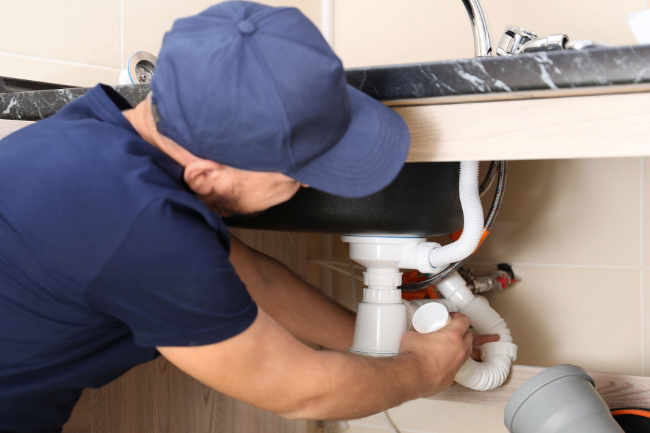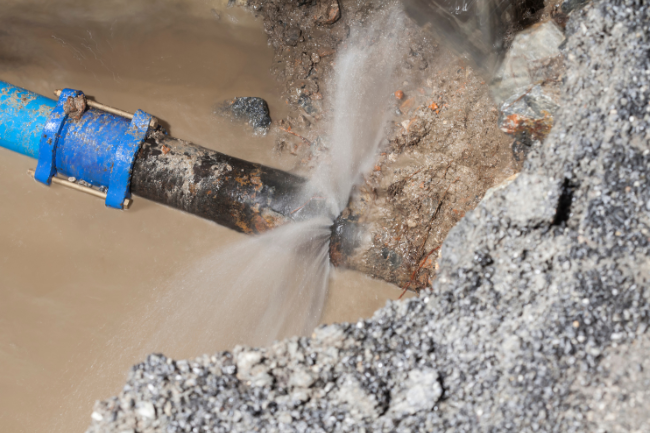The Ultimate Trenchless Glossary: Terms + Definitions
Posted by William Heinselman on

When we first introduce today’s high-efficiency pipe repair solutions to our customers, the barrage of new terms, techniques, and technologies can leave some more confused than before. What exactly is pipe bursting? What about directional boring? Better yet, how do these technologies make pipe repair affordable for me?
In this blog post, we’ve created a complete glossary for all things trenchless technology, which will hopefully settle some questions you have about these innovative pipe repair options. We think you’ll find that the basics of trenchless and CIPP (cured-in-place pipe) solutions are actually quite easy to understand.
Trenchless Terms to Remember
Below, we've defined some trenchless pipe lining terms that we believe will be useful.
Cured-in-Place Pipe (CIPP)
When pipe repair specialists mention “cured-in-place pipe,” they’re referring to the lining application and materials used broadly in trenchless repair. CIPP is the end result of trenchless application; the durable, plastic-epoxy pipe segments that lining creates.
Liquid-based, CIPP mixtures are physically applied to the insides of damaged home, lateral, or municipal pipes using pressurized air bladders, in a process that can take as little as two hours to complete. While curing, these pipe mixtures form smooth, single-bodied new pipe walls within pipes, eliminating the need to dig out old, damaged pipes altogether.
Without digging, trenchless CIPP helps homeowners nationwide save thousands on their pipe repair and related landscaping tasks every year.
Directional Boring
Directional boring refers to the industry practice and equipment used to reach otherwise inaccessible pipes. When there are no pre-existing entry points (sewer entrances, manholes, pipe openings), trenchless specialists will access your pipes using directional boring equipment.
Non-invasive directional boring equipment is used to essentially drill small, controlled entry points for CIPP application. The holes created by boring equipment are only as big as CIPP pipe solutions demand, and provide a less disruptive, zero-damage alternative to conventional pipe repair, in cases where existing entry points cannot be used.
Hydro-Jetting

Before CIPP or lining materials can be installed in your existing, damaged pipelines, your pipes will have to be cleared of all loose debris. The first choice for lateral and sewer pipe cleaning is hydro-jetting techniques.
During hydro-jetting applications, pipe repair specialists will use concentrated water pressure and velocity to forcibly break down debris or intruding materials. Hydro-jetting is power washing for your sewer pipes, and an essential first step in any trenchless repair application.
Interfit USA Lining
When we refer to epoxy, resin pipe lining materials, we’re talking about those produced by Interfit USA, a nationwide innovator in CIPP technology. Interfit USA creates the liquid, epoxy-plastic pipe mixtures used by trenchless specialists to repair damaged pipe segments faster and more affordably than any other technique.
Interfit pipe liners have earned their worth through broad compatibility with various pipe configurations, materials, and sizes. This includes:
- Clay, iron, steel, wood, Orangeburg, copper or PVC pipes
- Pipes with mainline diameters of 6”, 8”, 10” or 12”
- Pipes with lateral diameters of 2” or 6”
- Pipes with lateral angles anywhere between 0 and 180 degrees
Lateral/Pipe Lining
Lateral lining and general pipe lining are the industry “standard” for trenchless CIPP. This is the relining of damaged pipes (through either existing entry points or holes created with directional boring equipment) using epoxy, resin solutions, which can be completed in a single day.
Compared to the multiple days' worth of labor required in traditional, dig-and-replace repair methods, this means huge savings for those affected by damaged pipes. Lateral/pipe lining can be used to restore pipes damaged by a wide range of factors, including:
- Root intrusion
- Faulty or poor installation
- Cracking joints
- Breakage due to sudden temperature drops/freezing water
- Chemical corrosion
- Deterioration with time
Lateral Reinstatement
Lateral reinstatement is what comes after lining solutions cure in place, within your lateral walls. Once new pipe segments have been cured, home laterals and main sewer pipes must be reconnected; your new lateral pipe must have an opening cut to restore function. Reinstatement is the physical reconnection of your home lateral pipe and main sewer lines using robotic cutting equipment.
Manhole-to-Manhole Lining
Trenchless, cured-in-place pipe technologies can do more than just repair broken lateral pipes beneath homes… they can be used to restore major, municipal sewer lines with equal ease and efficiency, in a process known as manhole-to-manhole lining.
As the name implies, this process is typically completed through existing manhole entry points, in a lining/curing process that usually takes a matter of hours to finish. With zero traffic disruptions and surface-level street or sidewalk damage, this trenchless solution generates thousands of dollars in savings for municipal pipe repair annually.
Pipe Bursting
Pipe bursting is the affordable, zero-dig solution for underground pipe replacement, ideal for pipes damaged too severely for restoration to remain practical. Using conical, steel-bodied bursting heads, trenchless experts fragment collapsed pipe segments and clear a path for replacement pipe in a single action.
As replacement pipe segments are fixed to the wide end of bursting heads, they are laid in place seamlessly during application. Like pipe lining, pipe bursting can often be completed in a single day, which means great savings for you in terms of labor, time, and lawn repair costs.
Sectional Point Repair
Another specialized CIPP solution is what experts in the industry refer to as sectional point repair; the practice of using dual entry points and focused lining applications to remedy isolated pipe intrusions and localized damage.
For certain damages, full pipe lining is an impractical repair solution; sectional point repair lets homeowners get all the time and cost benefits of trenchless CIPP in a specialized application for small-scope pipe failure.
Trenchless Technology

At last, we come to trenchless technology, which broadly encapsulates everything we’ve covered in this blog. Trenchless technologies are the tools and techniques that professionals use to make all of the above repairs possible and save you money on your pipe renovation needs.
Here at Express Sewer & Drain, we know trenchless solutions inside and out and use this knowledge to help countless home and property owners every year save on their pipe repairs. If you’d like to learn more about what innovative, zero-dig CIPP solutions can do for you, don’t hesitate to contact us today.
Contact Express Sewer for Help With Trenchless Pipe Lining
Understanding the various trenchless technologies available for pipe repair can significantly impact your decision-making process and ultimately save you time and money. From CIPP to directional boring, these innovative solutions offer efficient, non-invasive alternatives to traditional methods.
At Express Sewer & Drain, we are committed to providing expert guidance and services tailored to your specific needs. Embrace the future of pipe repair with confidence, knowing that our team is here to support you every step of the way. Contact us today to explore how trenchless technology can benefit your home or business.

Topics: Pipe Bursting, Trenchless Technology





